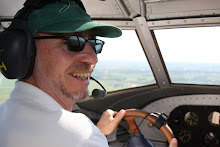Seeing the unseen with super-resolution fluorescence microscopy
Bo Huang
Harvard University
On the cellular scale, life gets interesting below 200–300 nm. That’s the length scale of most intracellular structures and the level at which the cell carries out most of its work. Unfortunately, it’s a blind spot for conventional light microscopes. Even when using fluorescent-tagged molecules, light microscopes cannot resolve two objects closer than half the wavelength of the light because of the phenomenon called diffraction. Their images look blurry and overlap no matter how high the magnification. This resolution limit is like the fat man wearing a tall hat in the movie seat in front of you. He’s blocking the best part of the picture. Now comes a new “super-resolution” fluorescence microscopy technique that may at least get the fat man to remove his hat.
TO READ MORE, GO TO:
https://www.ascb.org/ascbsec/press/embargo/ASCB-pressbook08_Huang.pdf
Tuesday, December 16, 2008
Subscribe to:
Post Comments (Atom)

No comments:
Post a Comment